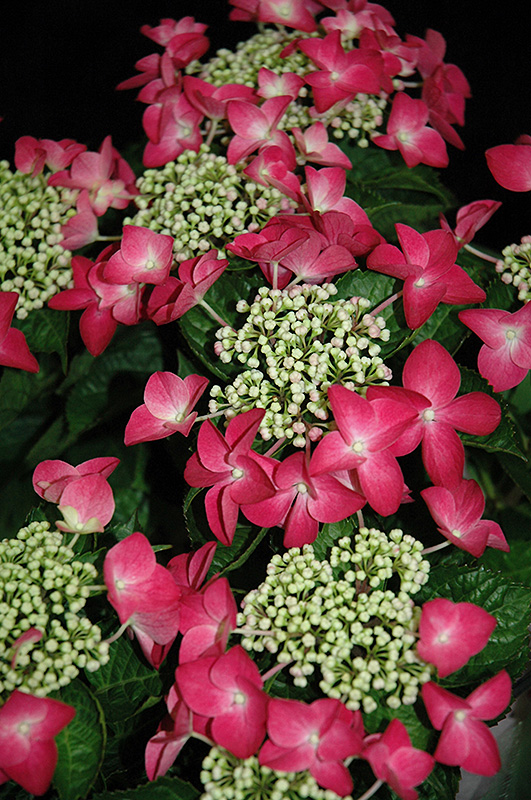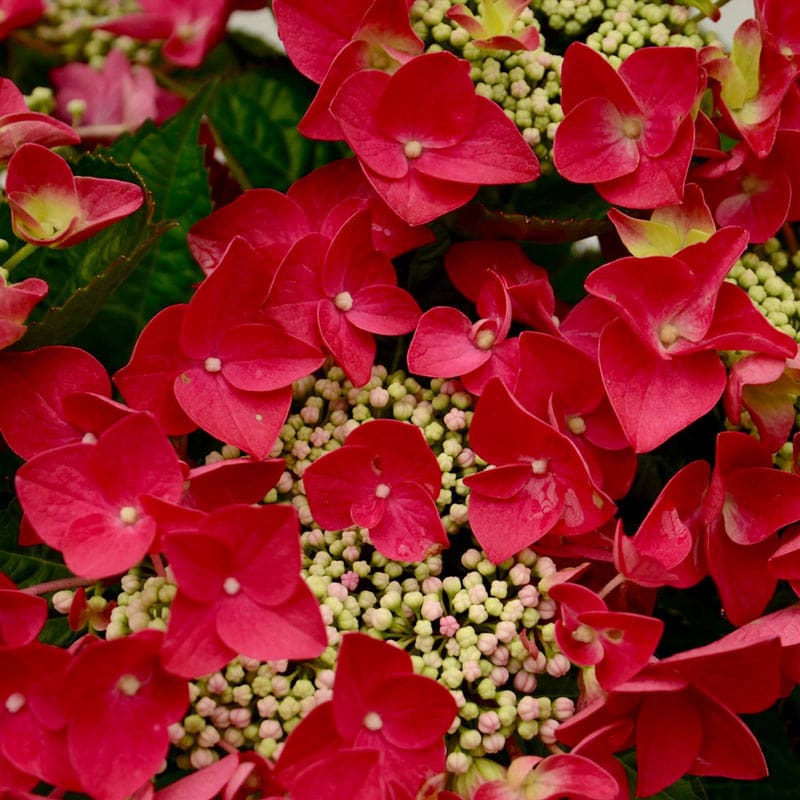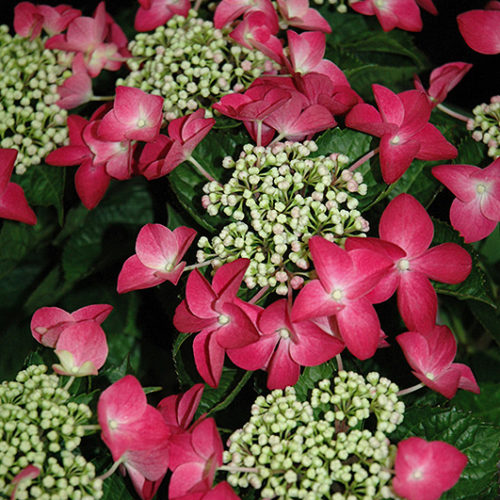The Sweetest Hydrangea Of All: Introducing The Strawberries And Cream Hydrangea
The Sweetest Hydrangea of All: Introducing the Strawberries and Cream Hydrangea
If you're looking for a hydrangea that is both beautiful and fragrant, then the Strawberries and Cream Hydrangea is the perfect choice for you. This stunning shrub is known for its large, cone-shaped blooms that start out a delicate pink and fade to a creamy white as they mature. The flowers are also suffused with a sweet, strawberry scent that will fill your garden with fragrance.
The Strawberries and Cream Hydrangea is a relatively new cultivar, having been introduced in 2009. It is a hybrid of the Hydrangea paniculata and Hydrangea arborescens species. This means that it combines the best features of both parents, with the large, showy blooms of the Hydrangea paniculata and the cold hardiness of the Hydrangea arborescens.
The Strawberries and Cream Hydrangea is a relatively easy plant to care for. It prefers full sun to partial shade and moist, well-drained soil. It is also relatively drought tolerant once it is established.
To encourage the best blooms, it is a good idea to fertilize the Strawberries and Cream Hydrangea in the spring and fall. You can use a balanced fertilizer, such as 10-10-10. You should also deadhead the flowers regularly to encourage new blooms.
The Strawberries and Cream Hydrangea is a relatively pest- and disease-free plant. However, it is susceptible to powdery mildew. If you see signs of powdery mildew, you can treat it with a fungicide.
The Strawberries and Cream Hydrangea is a beautiful and versatile plant that can be used in a variety of ways in the garden. It can be planted as a specimen shrub, in a mixed border, or in a hedge. It is also a popular choice for cut flowers.
If you are looking for a hydrangea that is both beautiful and fragrant, then the Strawberries and Cream Hydrangea is the perfect choice for you. This stunning shrub is sure to add a touch of sweetness to your garden.
[Main Content]
Here are some additional details about the Strawberries and Cream Hydrangea:
- Size: The Strawberries and Cream Hydrangea typically grows to be 4-6 feet tall and 3-4 feet wide.
- Bloom time: The flowers bloom in mid-summer and can last for several weeks.
- Hardiness: The Strawberries and Cream Hydrangea is hardy in zones 4-9.
- Care: The Strawberries and Cream Hydrangea is a relatively easy plant to care for. It prefers full sun to partial shade and moist, well-drained soil. It is also relatively drought tolerant once it is established.
- Pests and diseases: The Strawberries and Cream Hydrangea is relatively pest- and disease-free. However, it is susceptible to powdery mildew.
Here are some tips for growing Strawberries and Cream Hydrangeas:
- Plant in full sun to partial shade.
- Provide moist, well-drained soil.
- Fertilize in the spring and fall with a balanced fertilizer.
- Deadhead flowers regularly to encourage new blooms.
- Water deeply during dry periods.
- Protect from powdery mildew with a fungicide if necessary.
Conclusion
The Strawberries and Cream Hydrangea is a beautiful and versatile plant that is sure to add a touch of sweetness to your garden. With its large, cone-shaped blooms, sweet fragrance, and relatively easy care requirements, this hydrangea is a great choice for gardeners of all levels.
If you're looking for a hydrangea that's as beautiful as it is delicious, look no further than the strawberries and cream hydrangea. This stunning shrub blooms in shades of pink, cream, and green, creating a truly eye-catching display. And because it's so easy to care for, the strawberries and cream hydrangea is a great choice for even the most inexperienced gardener.
To learn more about this amazing plant, I recommend visiting . This website has a wealth of information about the strawberries and cream hydrangea, including its history, care requirements, and pest and disease resistance. You'll also find beautiful photos of this plant in full bloom.
So what are you waiting for? Visit today and learn more about the strawberries and cream hydrangea!
FAQ of strawberries and cream hydrangea
1. What are the different colors of strawberries and cream hydrangeas?
Strawberries and cream hydrangeas can be white, pink, or a combination of both. The color of the flowers depends on the acidity of the soil. In acidic soil, the flowers will be blue. In alkaline soil, the flowers will be pink. In neutral soil, the flowers may be a combination of blue and pink.
2. How do I get my strawberries and cream hydrangea to change color?
If you want your strawberries and cream hydrangea to change color, you can adjust the acidity of the soil. To make the soil more acidic, you can add sulfur or aluminum sulfate. To make the soil more alkaline, you can add lime.
3. How do I care for strawberries and cream hydrangeas?
Strawberries and cream hydrangeas are relatively easy to care for. They need full sun to partial shade and well-drained soil. They should be watered regularly, especially during the summer months. You should also fertilize them once a year in the spring.
4. What are some common pests and diseases of strawberries and cream hydrangeas?
The most common pests of strawberries and cream hydrangeas are aphids, scale insects, and spider mites. The most common diseases of strawberries and cream hydrangeas are leaf spot, powdery mildew, and verticillium wilt.
5. How do I propagate strawberries and cream hydrangeas?
Strawberries and cream hydrangeas can be propagated by taking cuttings or by dividing the plant. To take cuttings, you will need to cut a 4-6 inch piece of stem from the plant in the spring or summer. The cutting should have at least 3 nodes. Plant the cutting in a pot of well-drained soil and keep the soil moist. The cutting should root in a few weeks. To divide the plant, you will need to dig up the plant in the spring or fall. Use a sharp knife to divide the plant into two or more sections. Replant the sections in their own pots or in the garden.
Image of strawberries and cream hydrangea
- Image 1: A large, white hydrangea with pink edges, surrounded by green leaves. The flowers are arranged in a cascading pattern, giving the impression of a waterfall.

- Image 2: A close-up of a single flower, showing the delicate pink edges and the white center. The petals are slightly cupped, giving the flower a fuller appearance.

- Image 3: A bouquet of strawberries and cream hydrangeas, arranged in a vase. The flowers are a mix of white, pink, and green, and they add a touch of elegance to any room.

- Image 4: A field of strawberries and cream hydrangeas, in full bloom. The flowers are a beautiful shade of pink, and they create a stunning backdrop for any photo.

- Image 5: A single strawberry and cream hydrangea flower, floating in a glass of water. The flower is perfectly reflected in the water, creating a beautiful and serene scene.

Post a Comment for "The Sweetest Hydrangea Of All: Introducing The Strawberries And Cream Hydrangea"